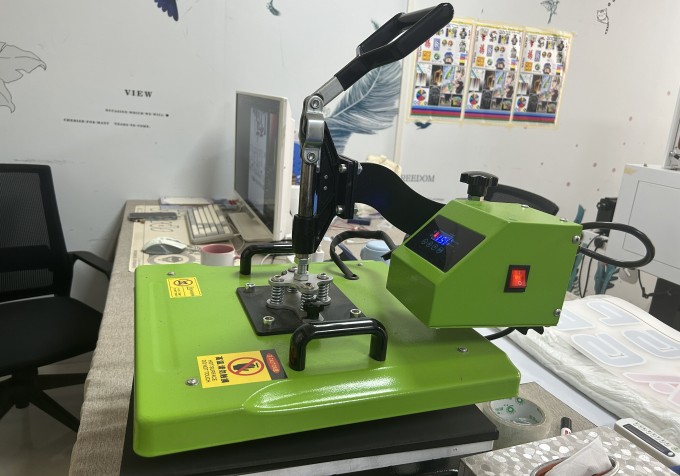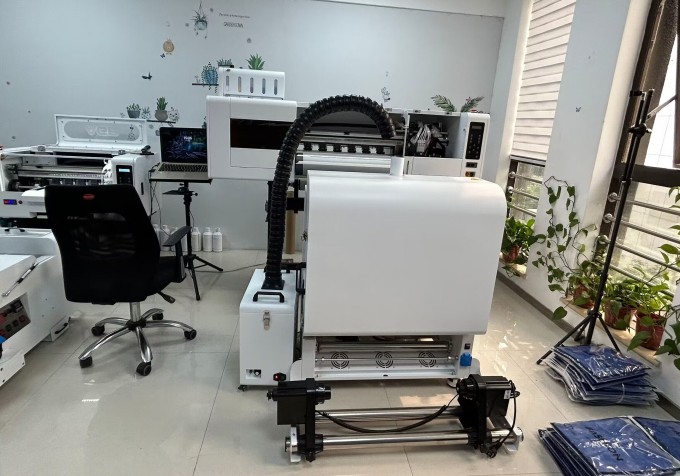If you're new to the textile industry, or if you just want to design your own clothes, it's good to know the basics of heat transfer printing.
This method involves transferring the print to your clothing using a heat source, usually a heat press. First, place the laundry on the table (flat surface). Next, press down on the cloth for 5-10 seconds. You're done - just remove the transfer from the clothing!
How to choose a heat press?
You definitely want a sturdy heat press machine that you can confidently depend on to apply your heat transfers. You also need heat transfer materials that can withstand multiple washes and still have high-quality prints.

What method do you use when you create custom clothing? There are many ways to decorate shirts and other garments such as screen printing, embroidery, heat transfer, DTG and sublimation. Do you use multiple methods or stick to one? Heat transfer printing is the fastest and easiest way to decorate custom garments. But even so, there are many different types of heat transfers, so how do you choose the best one?
Heat transfer type
Like I mentioned above, there are several types of heat transfers available for embellishing custom t-shirts and apparel. Your options include heat transfer vinyl (or HTV for short), sublimation transfers, and screen printing transfers.
Screen-printing
Screen printing is a printing method in which a screen and mesh are used to create a design on fabric. First, the template version of the design is made from nylon mesh screens. The fabric is placed beneath the mesh screen stretched over the frame. Next, use the squeegee to apply the ink/dye one color at a time, pressing it firmly into the fabric. There are two types of screen printing - flat bed screen printing and rotary screen printing - but rotary screen printing is the most cost effective.
Best used for:
Because colors are applied one at a time, this method is best used for designs with a small number of solid, monochromatic colors.
It's also a great approach for designs with special details, such as prints with crisp, thin lines. Special inks can be used to add different textures and surfaces such as metallic or foil finishes.
Affordability
For designs with multiple colors, screen printing can be expensive - a different screen must be made for each color in the print.
High preparation costs make this method cost-effective for large, recurring orders, but not feasible for small, one-off orders.
Advantage:
It's expensive to set up, but once you've made your screens and stencils, you can make multiple prints for a great price!
The fabric options are unlimited! Applying directly allows full fabric penetration - for a bright, intense effect that is equally visible on light and dark fabrics.
When it comes to color vibrancy, intensity and penetration, screen printing reigns supreme. The ink penetrates deeply into the fabric, better and longer lasting than other forms of printing.
Disadvantage:
Photos, toned and gradient prints will not work as there are too many colors. Screen printing is usually limited to 8-12 screens/colors.
Designs must fit the screen size, so all-over prints or continuous designs are not suitable.
Sample prints cost too much, because the cost of making the screen is too high.
Digital(Direct to Garment) printing
Digital Printing and (direct-to-garment) is done with a special printer and water-soluble ink. The designs are printed directly from the computer file either on a garment or fabric roll similar to how your inkjet printer at home prints on paper. Finally, the artwork is heat set with a heat press or tunnel dryer.
Best used for:
This method prints exactly what is on the computer screen. As such, it's ideal for highly detailed, intricate prints with photographic, tonal, or gradient colors.
Affordability:
More affordable than screen printing when printing small yardages.
Advantage:
Inks are designed for every fabric, allowing for unlimited fabric options!
This method is ideal for small batches, as fewer prints cost less.
Maximum design detail, precision and consistency!
Disadvantage:
The ink does not penetrate very deeply and will start to wear off after repeated washings.
This method is not suitable for dark garments as the ink does not penetrate well.
The colors are dull - not textured and bold like screen printing.
Sublimation printing
Sublimation printing is one of the newest techniques in the industry. Sublimation printers use heat to transfer dye onto paper which is then transferred either on fabric or the garment itself. The method is very similar to the heat transfer method, but there is one crucial difference. The heat sublimation ink transforms from a liquid to gas before totally disintegrating into the fabric. The ink’s gaseous state allows the ink to penetrate the fabric completely instead of sitting on top of the fabric.
Best used for:
Sublimation printing is great for all over / seam to seam printing. It is also suitable for applique prints that are difficult to design on fabric by the yard. This process results in bold, lively artwork.
Affordability:
While the quality is better, this process is much more expensive than the thermal transfer method due to equipment cost/ink cost.
advantage:
Because the gaseous ink completely dissolves into the fabric, the cloth is soft to the touch.
The quality lasts longer than thermal transfer or digital printing methods, making it an excellent choice for activewear and swimwear that requires extensive wear and exposure to sunlight/chlorine.
Ideal for designs that require detail and precision.
Disadvantage:
Fabric options are limited - sublimation inks only work with synthetic fibers, primarily polyester or polyester blends.
DTF (Direct to PET Film) printing
This process mostly involves a printer powder shaker and a heat press. Printing is first done on transfer paper, then the design is transferred to the fabric as the fabric and paper pass through heated rollers or heat presses.

Best used for:
This is a great method for simple, redundant print jobs like logos or graphic tees.
Affordability:
The Textile dtf printing method is one of the most common and lowest cost textile printing methods in the industry. It is cost-effective for both one-off and bulk orders.
Advantage:
1. Better color vibrancy and detail: Textile DTF printers use white film as the bottom layer, which has better color vibrancy and detail compared to other printing technologies. This is because the ink is absorbed into the fabric rather than simply sitting on top of it.
2. No color limitation: The number of colors that can be used in a design is not limited by DTF printing. This means that even complex designs with multiple colors can be easily printed.
3. Small batches are cost-effective: With no setup fees or minimum order quantities, DTF printing is cost-effective for small quantities of t-shirts. This makes it a great choice for small businesses or individuals who only need to make a few t-shirts.
4. Can be used on a variety of fabrics: DTF printing can be used on a variety of fabrics, including cotton, polyester and blends. As such, it is a versatile printing technique that can be used on a variety of T-shirts and other items.
5. Easy to use: DTF printing is easy to use and can be done quickly and efficiently. This makes it an excellent choice for companies that need fast, on-demand t-shirt printing.
TEXTEK's business covers many countries around the world, including emerging markets and mature markets. We have a complete sales system and are committed to using our professional knowledge and first-class service to help customers improve their digital printing business.
.jpg)


.jpg)
